Welcome to my sixth newsletter and a very Happy New Year to you all. I have given up making New Year’s resolutions as I so seldom manage to keep to them. However, I would like to feel that 2011 is the year of the tidy office. I suspect that it won’t be, but it’s nice to think it could be.Contents
- Wordle Power
- Give me a minute…
- Mountain Madness
- Pen Thoughts
- Forthcoming Events
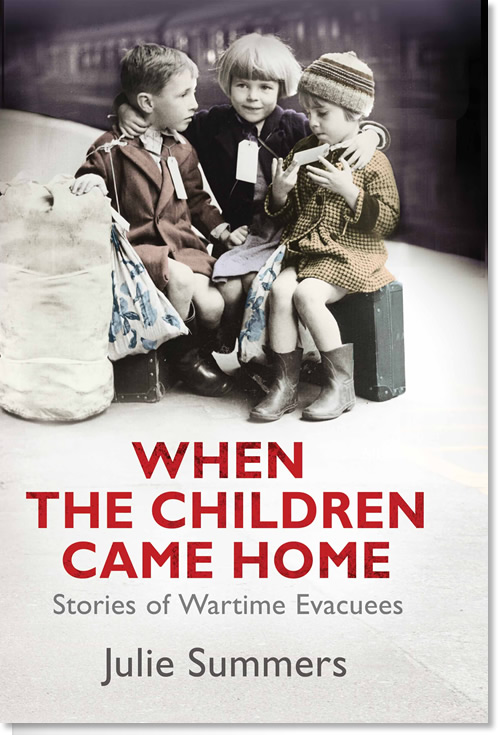
Wordle Power
Within my family it is a standing joke that, although I spend more time in front of my computer than I allow my sons, I am the least computer-literate of all of us. I use my computer as a word processor, spread sheet producer, and of course I have access to the Internet and rely on Google to help me to track down snippets of information that I can then follow up in books or conversations. However, I admit to being temporarily fascinated by a Wordle. Chris showed me how to use it and I created one based on the entire contents of When the Children Came Home. Bear with me: this is more than just a gimmick. A Wordle, for those of you who, like me until yesterday, had never used one, is a program, available free on the Internet, that takes a piece of text and generates a ‘word cloud’. This gives prominence to words that occur most frequently in the source text.
The reason I wanted to run a Wordle on When the Children Came Home was to see what words occurred most frequently in the book and, in particular, whether the word I most dreaded appearing, abuse, would feature. How can I dread a word appearing when I wrote the book? Well, it’s simple. I had to address the issue but I fear the press will pick up on that one topic and get it out of proportion in the context of the rest of the book. Stories of the Second World War evacuation have been dominated in recent times by literature on the one hand and the media on the other, the latter focusing on the dark side. Think of Goodnight Mister Tom. It is a wonderful book, no doubt about it, and it has a happy ending, but its underlying theme is the physical and mental abuse, by an unstable mother, of an eleven-year-old evacuee boy. Think of the stories that make the press: children who had a miserable time as evacuees make much better copy than those who loved their foster families, fell in love with the countryside and returned home enriched by their experiences. Those who fall into the latter category often feel compelled to apologise for having had a ‘happy war’.
I became so concerned, when interviewing former evacuees, about the insistent apologies from those who wanted to tell me a good story with a happy outcome, that I began to do some rough statistics. Of the people whom I interviewed or whose stories I read for the book, over 85% felt that evacuation had been, for them, a positive experience. That is not to say that they were not at times homesick, nor does it mean that they found coming home as straightforward as they had hoped, but on balance they felt very fortunate. Many even claimed they had gained a second family, and certainly the number of children who were left legacies by their foster parents pays tribute to the long-lasting impact of those relationships formed in wartime.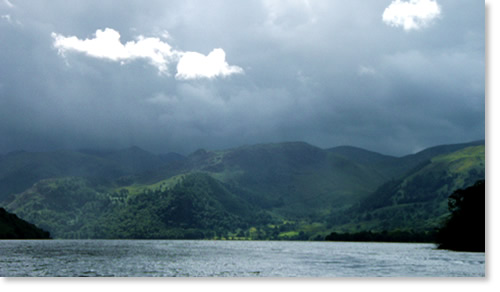 Ullswater, Cumbria.
Ullswater, Cumbria.
My father spent his evacuation at the south end of this most lovely of lakes.
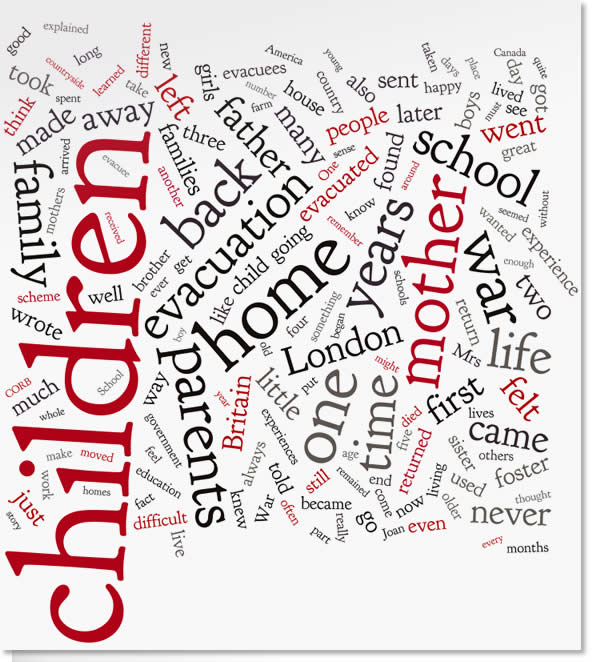
85% is of course not 100% and that leaves a large number – about a quarter of a million – who did not have a good experience. I have not shied away from writing about these children. Some suffered from chronic homesickness; others felt cut off from their families, others still felt abandoned in unfamiliar surroundings and turned in on themselves, shutting out the world. And some were indeed abused, both physically and sexually. But for many that I spoke to, it was the shock of coming home that was the real sadness for them. They had had, many of them, a good time in the countryside, but on returning to their families they felt out of kilter and some never adjusted to home life again. These children outnumbered those who spoke about outright abuse by 10 to 1.
My Wordle tells the story of When the Children Came Home in the most direct way I could conceive. Look at the words that dominate: ‘Children’ ‘home’ ‘ family’ ‘parents’ ‘mother’, as well as ‘evacuation’ ‘war’ ‘back’ ‘time’ and ‘school’. I do not want to read too much into it but I am heartened by the predominance of family oriented words. After all, these were children and they needed loving, caring for and looking after, and I believe that the majority of them benefited from exactly that. As Don Murdoch, one of my evacuees, said:
I am eternally grateful to those kindly couples who took me into their home, shared my joys and sorrows, and made me a temporary member of their families at a time my own family was under tremendous pressure. My subsequent life and career was, I believe, profoundly influenced for the better by my experiences as an evacuee. Perhaps one day the nation will acknowledge the thanks it owes to the many thousands of good-hearted ordinary country folk who, for scant reward, upset their domestic arrangements to accommodate children from the cities.I would not claim to have done anything more than record what I encountered but I am confident that Don Murdoch speaks for the very great majority of the former evacuee children I interviewed for When the Children Came Home.
The book is due out on 3 March this year and I am looking forward to its publication as I will be to meeting many of the ‘children’ whom I interviewed for the book, some of whom I know only from telephone conversations, although I have met others several times. One of the big surprises of the book launch we had for Stranger in the House was when people interviewed for the book met one another. They found common threads, often with no relation to the book per se, but some other link in their past. I found this very exciting and I anticipate similar coincidences this time.
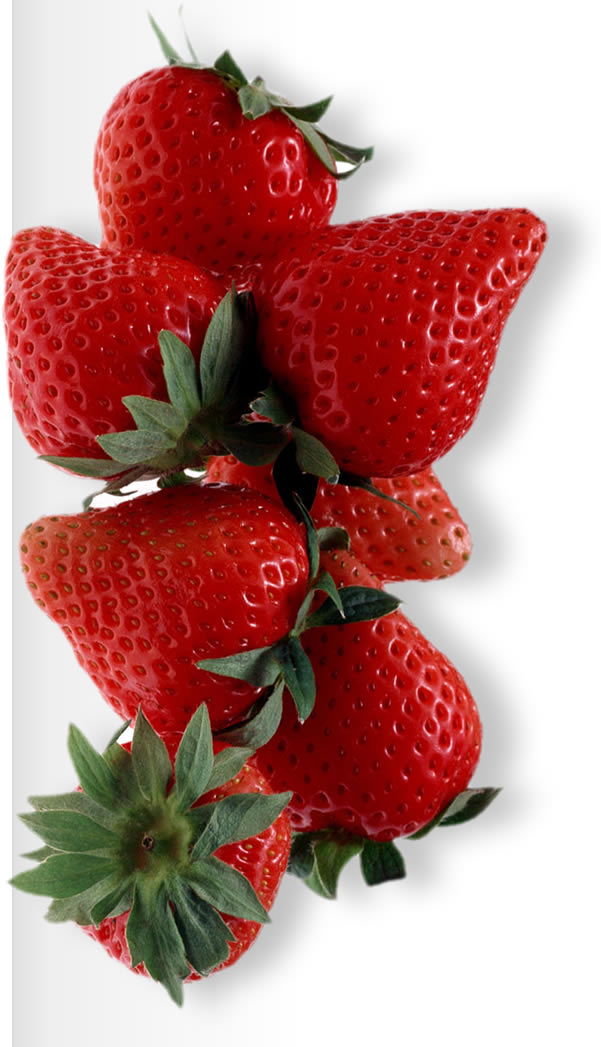
Give me a minute…
When I began work on the book about the history of the Women’s Institute in the Second World War I had not really known what I should find in the archives of the national, county and local institutes. It is often regarded as something of a joke that the WI spent the war making jam while the men went out to fight. Put that stereotype right to the back of your mind and give the women who ran the WI from the top to the bottom a great deal more respect than that. True, they made jam. But it was not on some ad hoc basis. The Ministry of Agriculture asked them to pick up where they had left off after the Great War and take responsibility for helping to feed the country. As the food supplies coming in from the Empire were under threat and the country did not have sufficient supplies to feed itself, every scrap of extra food, every ripe plum, berry or hip, cherry, quince or apple could be bottled, pickled or canned. And it was done by the WI on such an industrial scale that during the first three years of the war they produced sufficient quantities of jam alone to feed the country for a year. Furthermore, they were up against the big jam-making factories who took, of course, the lion’s share of the farmed berries and fruits.
But they did a great deal more, and this is the excitement of pursuing research into archive records in detail. What I had not expected was such a wealth of detail and such minutiae about everyday life during the war. Every meeting was minuted, all accounts printed and audited, all resolutions recorded. The Women’s Institute is the most superb note-taker. Where the record books from the war are present there is almost nothing that cannot be divined from these impeccable sources. The minutes of the Women’s Institutes are a study in their own right. Today I read the executive minutes from 19th May 1945. Not a single word written about the end of the war but a sense of a cloud being lifted was somehow conveyed in those handwritten minutes and I found it very moving. Every set was laid out to a formula, and yet somehow they manage to convey something of the excitement and drama of the time.
One of the things that astounds me is the foresight that the women showed. As early as 1941 they were organising lectures on post-war reconstruction, reconciliation and education. They were in touch with international women’s groups and soon after the war Miss Deneke, from the Oxford Federation of Women’s Institutes, made a visit to Germany to meet representatives of their women’s groups. But they also took the long view on the war and the Oxfordshire Federation organised a competition in 1939 that was not judged until 1946: the best war record. This was won by Burford.
This is a wonderful project to be engaged on and I am greatly enjoying the thrill of finding material, most of which has not seen the light of day for well over half a century.Mountain Madness
The back end of last year was dominated by mountains. For most of November and the early part of December I was involved in a number of lectures, events, interviews and book reviews. The largest event, and the most thrilling, was Doug Scott’s First on Everest tour that was a fundraiser for his charity, Community Action Nepal. Doug decided he wanted to do a dry run of four talks in Oxford, which I was to compère, the day before our big event at the Royal Geographical Society. This seemed like a good idea at the time, but as November approached and we had only managed to get rid of about 125 of the 600 tickets for the town hall it all looked a bit dodgy. I was only really peripherally involved in getting the publicity going, but Phil Powell, a tireless campaigner and great enthusiast for both Nepal and mountaineering lectures, managed to drum up all sorts of support from schools, newspapers and colleges, and suddenly, with two days to go, the event was full. We were sold out. Also, with two days to go there was suddenly a call from Doug’s office to say that he needed accommodation for the guest speakers and could I put them up. So Chris, the boys and I ended up playing host to Tom Hornbein, the enormously distinguished octogenarian Everester from the 1963 West Ridge traverse and Peter Habeler, who climbed Everest without the use of supplemental oxygen with Reinhold Messner in 1978.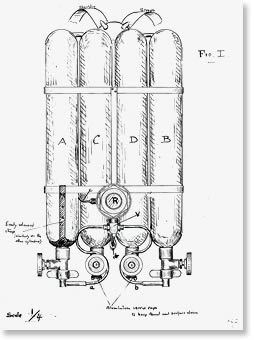 Sandy Irvine’s sketch for the redesign of the oxygen apparatus for the 1924 Mount Everest expedition© Merton College, Oxford
Sandy Irvine’s sketch for the redesign of the oxygen apparatus for the 1924 Mount Everest expedition© Merton College, Oxford
What a treat. As a diversion during the afternoon before the talks, I took Tom, his lovely wife Kathy, and Peter Habeler to Merton College to see the Sandy Irvine archive, which has just recently been gifted outright to Merton by the Irvine Trust. We looked at Sandy’s diary from Everest, the oxygen drawings he made while he was still in Oxford prior to leaving on the 1924 expedition, and the photographs he took on the trek across Tibet. But it was watching Tom and Peter poring over the oxygen drawings that really made me and the librarian, Julia Walworth, pinch ourselves. They were clearly moved to be studying the originals in the library where Sandy had been a student. Not, I imagine, that he had spent very much time himself in that library.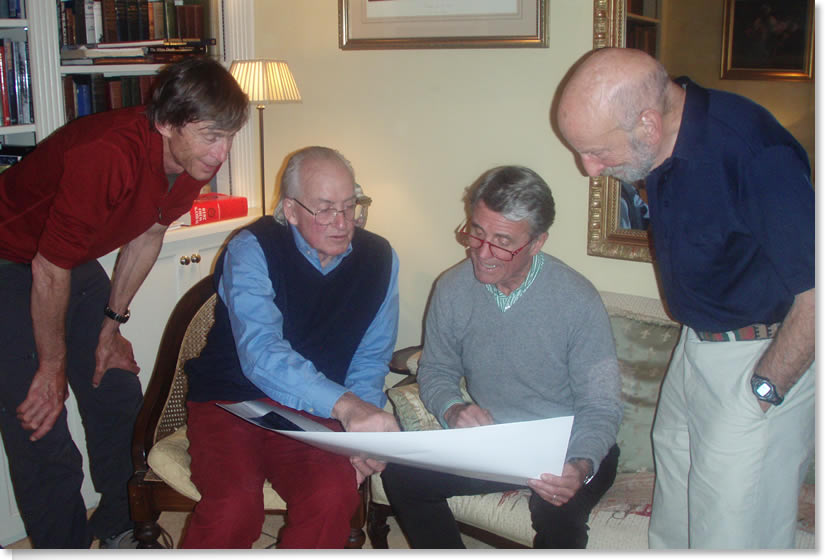 l-r: Tim McCartney Snape, Doug Scott, Peter Habeler and Tom Hornbein, climbed Mount Everest in 1984, 1975, 1978 and 1963 respectively.
l-r: Tim McCartney Snape, Doug Scott, Peter Habeler and Tom Hornbein, climbed Mount Everest in 1984, 1975, 1978 and 1963 respectively.
Here they are discussing routes up Kanchenjunga, the world’s third highest peak.
On our way out we visited the chapel and also had a tour of Mob Quad, where Sandy had rooms in 1923. Julia was explaining the history of the quad and telling us how, in the past, students had climbed out of the attic windows and on to the roof tops. Peter turned round, examined a crack between a tower and a corner wall, nudged Tom, who looked over eagerly to where he was pointing and said: ‘That would go’, indicating a vertical route up on to the roof. So, no chance of locking either Hornbein or Habeler in Mob Quad overnight. They would have escaped within minutes. Even today, I expect.
The events in Oxford and London were marvellous and they raised large amounts of money for Community Action Nepal, as well as enchanting audiences who were captivated by the talks given by these giants of the Mount Everest story.
For me it did not end there. The First on Everest show went on to Glasgow and Edinburgh whilst I headed to Kendal for my annual fill of mountain films and literature. This year I was the interviewer for the shortlisted authors for the Boardman Tasker Prize for mountaineering literature. As ever, it was a hugely enjoyable event and I had the privilege to meet four out of the five authors on the shortlist.
On Saturday afternoon Peter Habeler arrived in Kendal to give a lecture, which he did to a packed house, and after that I was bidden to drive him to Hesket Newmarket to have dinner with Doug Scott. This is where I took the photograph of the four men, all of whom have stood on the summit of the earth. Having spent nearly an hour discussing between themselves the attributes or otherwise of climbers who adjust to high altitude they turned their attention to routes. When I took the picture they were arguing over which route Doug had taken on Kanchenjunga.
As I said: what a treat.Pen Thoughts
Last year I wrote a piece in Pen Thoughts about the importance of book covers. I expressed the hope that the designer at Simon & Schuster would excel herself again with a cover for When the Children Came Home. I think you can judge that she has. It is absolutely lovely. I particularly like the way it looks on this website, which got me thinking about how important websites are. A good website needs to be kept fresh and up to date. This is probably more important for a commercial organisation than for an individual. Nevertheless, refreshing a website, even for a writer, is a task that cannot be left to the annual spring clean of the office. If that were the case mine would be stuck in 2007. I have a wonderful friend who does my website for me and I have to give him credit for making it so lively, quirky and cheerful. I am especially impressed that where I see beautifully placed images of just the right size or carefully moulded text that flows round an image, Andy sees lines of code of white on black. That he manages to produce such a sparkling end result is something I can only wonder at. Thank you, Andy.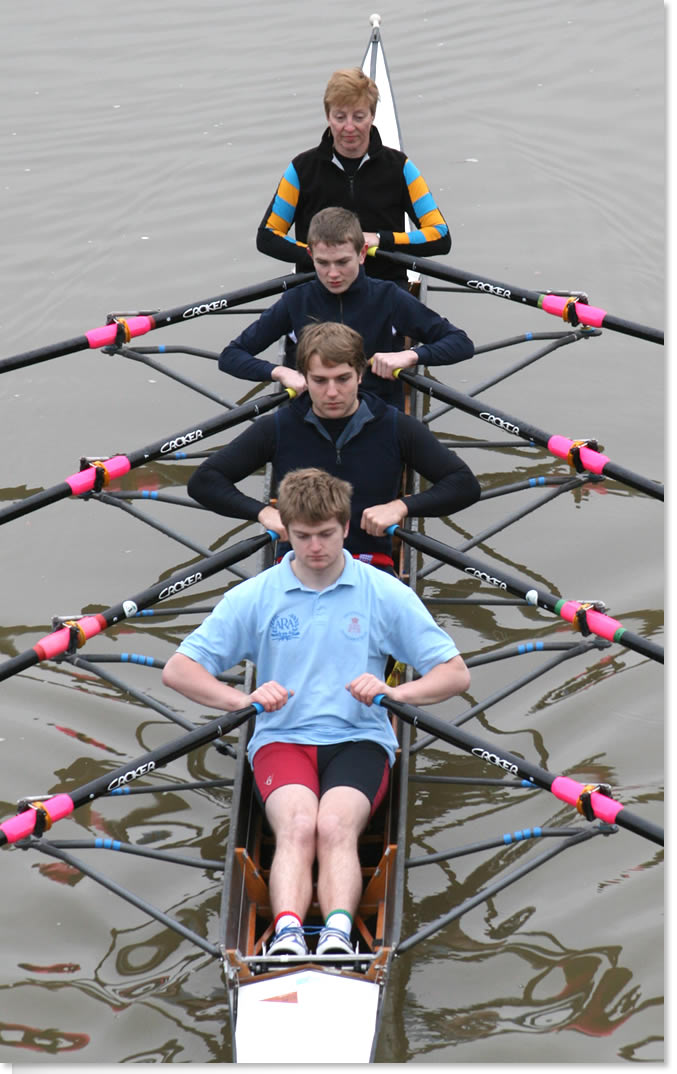 Richard, Simon, Sandy, Julie on the Isis, 30 December 2010And Finally…
Richard, Simon, Sandy, Julie on the Isis, 30 December 2010And Finally…
The river in Oxford is a fast flowing, swirling, terrifying café au lait so we are confined to the indoor rowing machines at the moment but just before the New Year I did have the most wonderful Christmas present from my sons that I could ever have imagined. Howzat?
Julie Summers
January 2011, Oxford
julie@juilesummers.co.ukForthcoming Events
- Tuesday 1st February 7:30pm
Everest Needs You, Mr IrvineKeswick Lecture Society in the Keswick Lecture Hall
Keswick Lecture Society - Thursday 3rd March
Book Launch When the Children Came Home with book tour for the following two weeks (tour information will be posted February)Simon & Schuster - Monday 4th April 4:pm
Oxford Literary Festival: Julie to interview Kitty Dimbleby about Daffodil Girls: Only They Know the Reality of Being an Army Wife: Meet the Women Behind Our Heroes
www.oxfordliteraryfestival.com - Tuesday 5th April 5:pm
Oxford Literary Festival: When the Children Came Home
www.oxfordliteraryfestival.com - Saturday 16th April, 10am to 5pm
From Everest to the EigerRewley House, Wellington Square, OxfordThis is a day of lectures by Julie Summers, Jerry Lovatt, John Porter and Peter Gillman, organised by Oxford University Continuing Education
www.conted.ox.ac.uk - Sunday 17th April, 3pm
When the Children Came HomeIWM, North, The Quays, Trafford Wharf Road, Manchester M17 1TZhttp://north.iwm.org.uk

